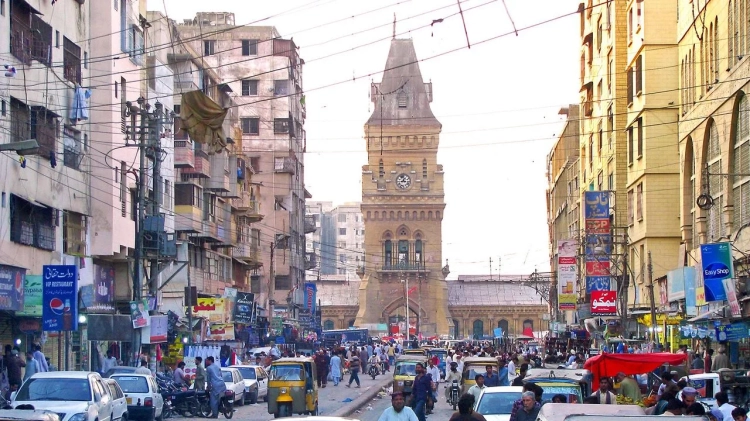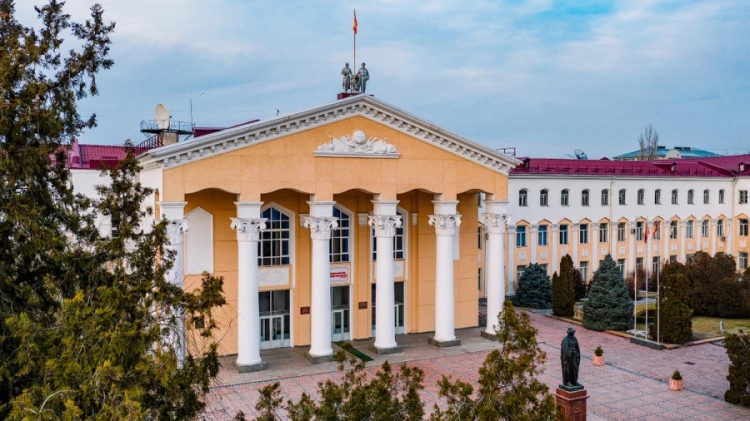Soviet Kyrgyzstan
The period when L. Brezhnev was at the head of the state management of the USSR is referred to by historians as "developed socialism." Indeed, during this time, the USSR transformed into a state with a developed economy and a powerful army.
The standard of living for people significantly improved. The country gained international recognition. However, at the same time, many economic, social, and political problems and tasks remained unresolved in the country.
Reforming the Economy. In 1965, the country's leadership decided to initiate economic reform. However, these reforms were carried out using the same familiar administrative-command methods of management.
The councils of the national economy, established by N. Khrushchev, were abolished, and ministries were recreated.
The administrative-command system contributed to the growth in the number of ministries and the officials working in them.
In such a small republic as Kyrgyzstan, there were more than 50 ministries, committees, and departments.
In the early years, the reform, despite its shortcomings, yielded positive results. The economy of Kyrgyzstan, including industry, developed rapidly. Only between 1966 and 1985, more than 150 large industrial enterprises were commissioned in Kyrgyzstan. New sectors emerged — machine engineering, non-ferrous metallurgy, electronics, instrument engineering, hydroenergy, and others.
The Toktogul Hydroelectric Power Station with a capacity of 1 million 200 thousand kilowatts and the Kurpsai Hydroelectric Power Station with a capacity of 800 thousand kilowatts were commissioned, which allowed for a sixfold increase in electricity production in the republic.
In 1985, more than 400 large enterprises in 130 sectors of the national economy produced over 4 thousand types of industrial products. Industry accounted for 60 percent of the new product of the republic and more than half of its national income. The industry of the republic had never reached such a level of development before.
A significant contribution to the socio-economic development of Kyrgyzstan during this period was made by its leaders — T. Usubaliev, T. Kulatov, A. Suyunbaev, S. Ibraimov, A. Duyshiev.
With the development of industry, the number of the working class in Kyrgyzstan also increased. At the same time, the training of national skilled labor was still not given due attention. Qualified specialists, as before, were invited from other republics. The working youth of the indigenous nationality were employed in jobs with harsh working conditions, in low-paid, unskilled productions. Such work quickly became tedious, and the youth resigned.
The main indicator of activity during the period of developed socialism was the fulfillment of the plan. Each working person, each enterprise, and the country as a whole had a plan. The plan had to be fulfilled at any cost. Initially, everyone tried to fulfill and exceed it. Various levels of competitions, reviews, contests, etc., gained wide scope. But gradually, in many institutions and enterprises, to receive bonuses, rewards, etc., they began to engage in falsifications, that is, deceiving the state. On the other hand, "equalization" thrived: those who fulfilled and those who did not fulfill the plan received the same rewards. This demoralized the workers; they did not strive to improve work results, and the prestige of conscientious and quality work fell. The principle of social justice was distorted. As a result, the initiated reforms were not completed, and the pace of economic development slowed down.
Development of Agriculture. Despite the sharp leap in industrial development, agriculture remained the backbone of Kyrgyzstan's economy during the period of developed socialism. With the existing division of labor in the USSR, our republic specialized primarily in the production of agricultural products.
During the years 1965-1985, agriculture in Kyrgyzstan transformed into a highly developed sector of the economy. During these years, the state directed enormous financial resources into the agricultural sector — 6.5 billion rubles. Never before had agriculture in the republic received such support.
First of all, these funds were directed towards the technical equipping of agriculture. Collective farms, state farms, and other enterprises received advanced, high-performance machinery. By 1985, each farm in Kyrgyzstan had an average of 72 tractors, 36 trucks, 20 combines, and other equipment. The agricultural complex was practically fully mechanized.
Part of the allocated funds was directed towards the electrification of agriculture. As a result, the production complexes of collective and state farms were fully electrified, which significantly eased and increased the efficiency of labor for rural workers.
In the conditions of the republic's dry and hot climate, land reclamation was of great importance. For these purposes, 1.5 billion rubles were allocated. Large reservoirs and irrigation systems were commissioned. The total area of irrigated land in the republic amounted to more than one million hectares.
As a result of the measures taken, the volume of gross agricultural production increased. However, at the same time, the cost of this production grew year by year. For example, between 1965 and 1985, the costs of producing 1 centner of wheat, cotton, potatoes, and tobacco doubled. The costs of growing vegetables and fruits increased fivefold. The same picture was observed in animal husbandry. In 1985, more than half of the collective and state farms in Kyrgyzstan operated at a loss, and their debts to the state were growing.
A New Life for the Village. The economic upturn during the era of developed socialism had the greatest impact on the village. Great attention was paid to improving the living standards of rural residents. A guaranteed wage for collective farmers was introduced. The state periodically raised the purchase prices for the products they produced, and collective farmers began to receive pensions and benefits.
Changes also occurred in the very appearance of rural settlements in the republic. Small ails, which emerged during the transition of the Kyrgyz people to settled life, were consolidated. The number of ails decreased from 3,500 to 1,500, about 2,000 ails were liquidated, and their residents were resettled into larger ones.
New large villages were constructed according to specially developed master plans. Instead of old thatched houses, new standard houses with wide rooms, large windows, and wooden floors were built. The villages featured wide, paved streets. Some streets were asphalted. Trees planted along the streets gave the villages a festive appearance.
Changes also occurred in the daily lives of rural residents. Electric household appliances, televisions, washing machines, etc., appeared in homes. The interior decoration of houses became more modern. European furniture appeared, which, combined with national carpets — shirdaks, ala kiyiz, tush kiyiz — created coziness and comfort in the home.
For the cultural and social service of rural residents, clubs, libraries, kindergartens, stores, and medical institutions operated.
Of course, there were also shortcomings and omissions. During the process of liquidating small ails, local features were sometimes not taken into account. For example, small ails located in areas suitable for grazing livestock and agriculture or in picturesque locations were declared unpromising, and people were forcibly resettled to larger ails. In some ails, multi-apartment buildings were constructed that did not meet the peculiarities of rural life.
During these years, there were still many ails that had no stores, clubs, medical points, or baths. They were mostly inhabited by Kyrgyz people. In every second ail located on the slopes of the mountains in the Chui Valley, and in every third kystak in the Osh region, there were no institutions for the cultural development of the population.
Negative Phenomena in Social Life. Despite the fact that the party leadership tried to glorify and demonstrate the achievements of developed socialism, the stagnation and slowdown in the economy could not help but affect the life of society. Negative processes seriously affected the social sphere, and a decline in public morality began.
Alcoholism and drunkenness became a real scourge of society, literally sweeping through all republics, including Kyrgyzstan. The authorities denied the existence of the problem and tried to downplay it. There was a belief that drunkenness was disappearing because there were no reasons for it in a socialist society.
However, the reality was different. In 1980, every seventh person in the USSR was an alcoholic. The party and government were forced to acknowledge this. In 1985, a law aimed at combating alcoholism and drunkenness was adopted. But it was already too late. Alcoholism was capturing more and more people. In Kyrgyzstan, compared to other Central Asian republics, the number of alcoholics was twice as high.
The imposition of a ban on alcohol gave rise to the spread of an even more terrible threat — drug addiction.
During the period of developed socialism, crime "flourished" widely. The truth about it was hidden from the people. In terms of the growth of crime, Kyrgyzstan ranked fourth among the union republics. Half of the crimes remained unsolved. State bodies for combating crime could not cope with their duties and were essentially powerless against it. It became impossible to hide from the people the negative processes occurring in society. Developed socialism found itself in a deep crisis.















































